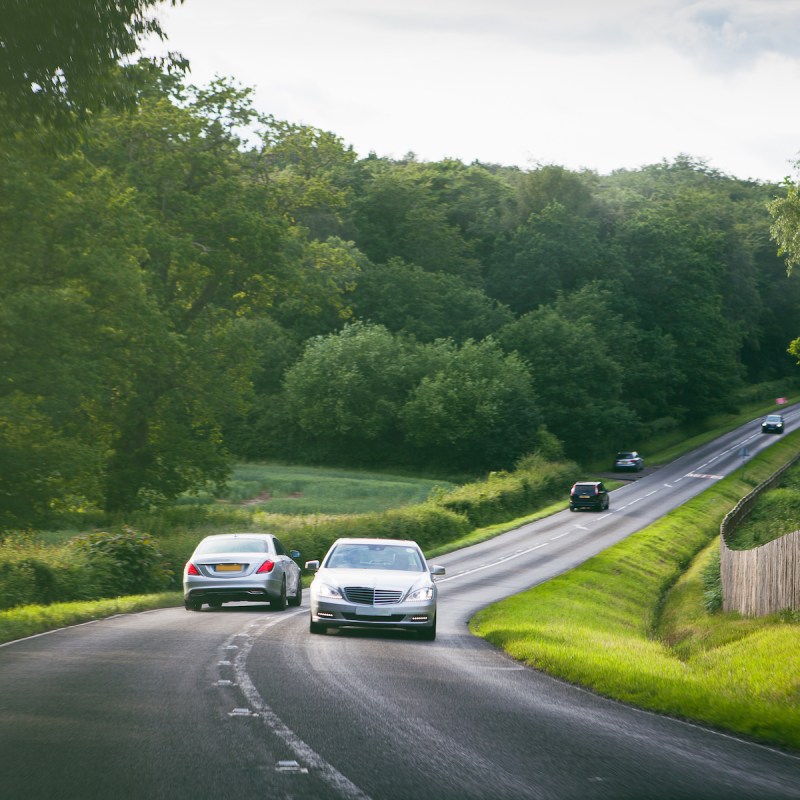
There are so many interesting places to visit in the UK and Ireland. From England’s historic Roman towns to quaint Scottish islands and picturesque Irish villages — unless you stay in London — you will almost certainly want to rent a car.
Videos by TravelAwaits
If exploring London is all you want to do, forget the car and use the underground (“Tube”). Public transport is much more developed over the water and taking a train or bus can often get you from one city to the next rapidly and comfortably. However, away from the towns and cities, public transport can be a little less available and renting (“hiring”) a car opens up all sorts of possibilities to discover wonderful places off the beaten track (think remote hiking in spectacular scenery and stopping for lunch at a remote country pub).
There is no reason driving overseas should feel like a daunting prospect. Here are a few things to consider before taking delivery of your rental car keys and slipping behind the wheel.
1. We Drive On The Left
This might sound obvious but it’s kind of important! In both the UK and Ireland, traffic drives on the left. There’s a good historical reason for this: When horseback was the main mode of getting from A to B, and most people were right-handed, riding on the left allowed you to easily protect yourself from possible threats approaching from the opposite direction. So… that’s why we drive on the left.
Staying on the left-hand side is easy when other cars are also on the road. However, when you are the only vehicle on the road, take extra care as you might find yourself drifting over to the right. This is particularly easy to do when you are turning right and there is no other traffic around or at night when no other vehicles are around to guide you.
2. Manual Or Automatic?
The majority of cars are manual (stick-shift) so you get an extra pedal too. If you are not used to driving a manual car, you can opt to rent an automatic transmission (often for an extra charge) but do check with the rental company ahead of time as there are fewer automatic vehicles available.
3. The First 20 Minutes
The first 20 minutes are the most dangerous moments when driving a new vehicle. It doesn’t help if this is also the time you want to thread your way out of an airport and are trying to find your way. Take the time to do a “cockpit check” to familiarize yourself with the controls before setting off. You may be eager to go but this check is well worth a few minutes of your time. You will likely bang your hand on the window a few times as you go to change gear and realize you need to use your left hand, not your right hand.
If you are picking up a car having just arrived on the red-eye across the Atlantic, be aware to stop at service stations or just pull over to take a short nap if you are feeling tired. The interstates (“motorways”) have numerous service areas where you can pull over for a rest. On smaller roads, you may find pullover areas (or “lay-bys” that are designated by a blue P sign) where you can park legally and free of charge.
4. Allow More Time
Roads away from the motorways can be narrow and slow. In tourist areas, the roads can become clogged during peak travel season. Consider traveling when schools are still in session and avoid public (“bank”) holiday weekends.
Distances may seem small on the map, but remember you’re not usually driving as the crow flies. Roads frequently meander, speed limits fall as you pass through villages, and traffic lights always seem to turn red as you approach them. Whatever time Google tells to allow for a journey, add more time.
5. Understand Renting Restrictions
You will need to present a valid U.S. or Canadian driver’s license to rent a car along with a valid photo ID. Many rental car companies in Ireland require drivers to be 25 years old or over, while the UK is 23 or over. Also, for those over 70, some companies may have additional restrictions, so do your research before booking. Also be aware of costly add-ons for having additional drivers. If you’re not planning on spending multiple hours driving each day, it may not be worth having that second driver on the ticket.
6. The Roads Are Narrow
Roads in the UK and Ireland are narrow compared to North America. Don’t be tempted to rent a larger vehicle than you really need. Parking spaces are equally narrow, so hiring a decent-sized SUV (the larger ones are called “people carriers,” like a Honda Odyssey) can be a very tight squeeze in many parking places.
7. Rules Of The Road
Take a moment to look at the rules of the road before driving for the first time. Check out the Highway Code (UK) and Rules of the Road (Ireland). Here are some tips to remain safe and avoid upsetting the locals.
Overtaking
People are more likely to overtake here than in North America on single highways (one lane in each direction) — and they are generally good at it. If you get stuck behind a slow-moving vehicle (i.e. a tractor) you will be expected to overtake it, too, when it is safe to do so. If you are not confident overtaking, pull over to let others pass.
No Turn On Red
This is a great rule in North America, but you cannot turn at a red traffic light in Ireland or the UK.
Box Junctions
Look out for that yellow-hatched area on the road at an intersection. The idea is to keep this area clear at all times so people can go through the junction. Do not enter the hatched area unless your exit is clear. If you get stuck in the “box,” other drivers will not be impressed.
Roundabouts
We love roundabouts; they keep the traffic moving. If your way is clear, you do not need to stop but yield (“give way”) if traffic is approaching from the right. Look out for mini-roundabouts — often just a white circle painted on the road — which serve the same purpose as a full-blown roundabout. Some congested roundabouts now also have traffic lights to better control traffic flow. Take care to ensure you are in the correct lane.
8. Watch Your Speed
Speed limits are posted in miles-per-hour in the UK but in kilometers-per-hour in Ireland. Speed cameras are installed everywhere, and therefore, most drivers tend to stick to the limit. If you happen to get caught speeding, not only will you likely receive a fine, but rental car companies will also hit you with an administration fee for sending you the ticket.
9. Learn The Vocabulary
Forget the accent, even the words are different over here. The engine is under the “bonnet” (hood) and you store your luggage in the “boot” (trunk). You fill up with “petrol” (gas) and the GPS is often called the “sat-nav.” The glass at the front is the “windscreen” and “indicators” are your turn signals. In an emergency, you put on your hazard warning lights (don’t say “flashers;” these are people who expose themselves). Motorways are equivalent to interstates, we give way and we drive slowly over “sleeping policemen” (humps in the road to slow traffic).
Take the time at the beginning of your journey to familiarize yourself with the vehicle, know your route, and take your time, and you will have a safe, fabulous experience exploring the beauty of the British Isles.
Related Reading:

